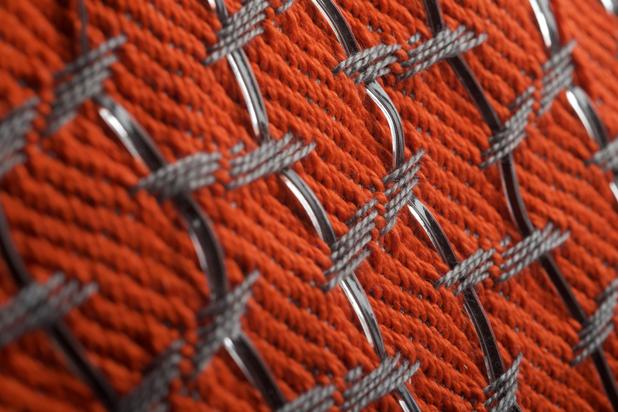Imagine if you could wear an ear. That probably sounds like the plot of a god-awful sci-fi screenplay from the 70s. But bear with us—it’s actually the future of fabric, and could very well play a new role in some critical medical applications.
In a new study published on Wednesday in the journal Nature, researchers from around the U.S.created a fiber that can bend under the slightest sounds. When woven into a shirt, the fibers were able to pick up the direction a sound was coming from—even ones as faint as a living person’s heartbeats.
“The project looks very exciting,” Swarun Kumar, an electrical engineer at Carnegie Mellon University who was not part of the study, told The Daily Beast in an email. “The health implications of this work, such as sensing heartbeats and heart rhythms sound very [promising].”
These “smart fabrics” that can sense and respond to external stimuli (like sound, heat, or light) can trace their origins to research in Japan in the late 1980s, when scientists engineered a silk thread to have shape memory. In recent years, we’ve seen the emergence of smart fabrics woven with near-field communication antennas—the technology used for pairing devices and making contactless payments. Some are even able to boast the ability to fold by themselves.
“A key aspect about smart fabrics is that the flexibility makes them easier to integrate into a human environment,” Julie Chen, a mechanical engineer at the University of Massachusetts Lowell who was not part of the study, told The Daily Beast in an email. “Not just because they are ‘wearable,’ but because they can conform to 3D, complex shapes, rather than being rigid slabs or boxes.”
Yoel Fink, an electrical engineer at MIT, and his colleagues were encouraged to take smart fabrics one step further and see if it was possible to make these fibers respond to sound.

The researchers realized they could just copy Mother Nature: In the human ear, the vibrational energy of sounds causes hair fibers deep within the ear to swish back and forth, generating electrical impulses that are then conveyed to the brain to let us process these vibrations as sound.
This led Fink and his team to create a novel fiber that was the right amount of sturdy while also being flexible and generating an electric signal when bent—the perfect fabric “ear.” When testing a single fiber’s sensitivity, they found it could pick up the most imperceptible sounds in a quiet library as easily as noises from heavy road traffic or a speaker playing nearby. The sensitivity was so on point that if someone was wearing a shirt woven with the fibers, it could tell which direction a sound was coming from.
“When you put multiple fibers in a fabric, they could actually tell you direction and you could tune them to listen to particular directions and with pretty amazing accuracy,” Fink, a coauthor of the new study, told The Daily Beast.
The researchers see endless possibilities for their smart fabric. The obvious application is in improving hearing aids, which Fink said have trouble discerning the direction of a sound, particularly in noisy environments. But the fabric could also help engineers design wearable fabrics that can measure vital signs, monitor space dust in new kinds of spacecraft, and listen for signs of deterioration in buildings like emerging cracks and strains.
“An OB/GYN [doctor] told me we don’t have effective ways to do fetal heart monitoring out of the hospital,” said Fink, adding that his team was able to accurately detect certain heart sounds when they stitched a fiber right above the heart in a shirt of a healthy volunteer. “We’re going to work on using our fiber for fetal heart monitoring for sure.”
They also potentially want their fibers to act as a boombox or sound cancellation system, something they did in the lab by reverse engineering electrical signals into vibrations.
While the fibers are super sensitive to vibration, they can’t really tell what an incoming sound is, especially if there are many being received at one time. For that, Fink and his team plan to research using algorithms and machine learning to identify a sound’s electrical signal to make sense of it for the future user.
“Fibers are ubiquitous—there are very few materials as intimate as fibers and fabric,” said Fink. “They surround us from the very moment we’re born so wouldn’t it be great if they could not just keep us warm and comfortable but truly add value to things?”
